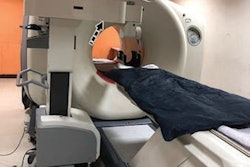The National Institute of Allergy and Infectious Diseases (NIAID), part of the U.S. National Institutes of Health, has published a new plan for tuberculosis research, and imaging -- particularly PET/CT -- is a key part of the strategy. The document was released on September 26 to coincide with the United Nations General Assembly meeting in New York City on ending tuberculosis.
The "NIAID Strategic Plan for Tuberculosis Research" calls for studies using imaging and systems biology to explore why tuberculosis infection remains latent in some people before progressing to active disease. The plan also calls for investigation into factors that affect tuberculosis disease, transmission, and epidemiology, the NIAID said.
"Currently, the only readily available tools, in addition to radiographic imaging, to determine whether a patient is infected are blood or skin tests that measure immune responses against [Mycobacterium tuberculosis (Mtb)] proteins," the NIAID said in its plan. "Modern imaging technologies, such as [PET/CT], provide sophisticated insights into the dynamics of tuberculosis pathology in humans, particularly the development and evolution of pulmonary granulomas, which are pockets of infection walled off by the host immune response."




















